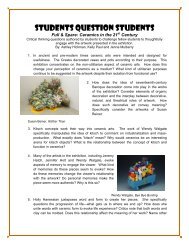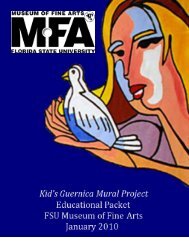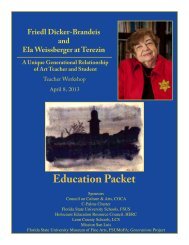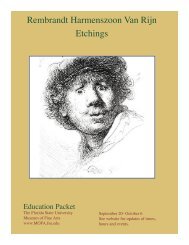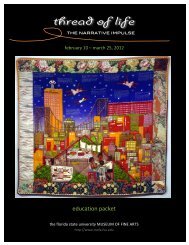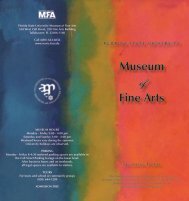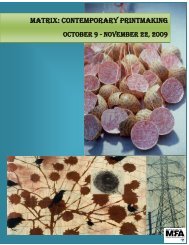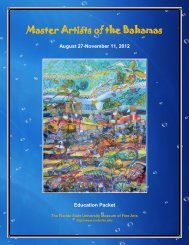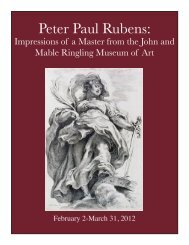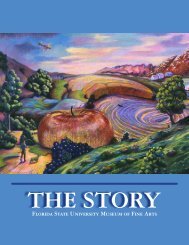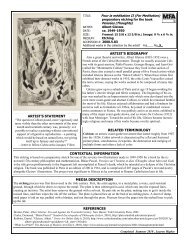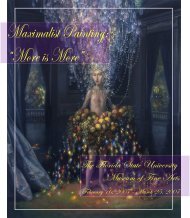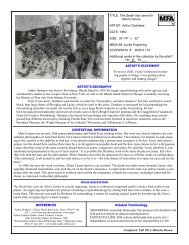old master drawings - Museum of Fine Arts - Florida State University
old master drawings - Museum of Fine Arts - Florida State University
old master drawings - Museum of Fine Arts - Florida State University
Create successful ePaper yourself
Turn your PDF publications into a flip-book with our unique Google optimized e-Paper software.
The History <strong>of</strong> Old Masters and their DrawingsFebruary/March2009The term Old Master is <strong>of</strong>ten used to describe a European painter <strong>of</strong> skillwho was born before the 19 th century. As time has passed, other importantartists born in the 1800s have also been considered Old Masters. In theory, anOld Master should be an artist who was fully trained, was a <strong>master</strong> <strong>of</strong> his localartists’ guild, and also worked independently. Old Master Drawings are soclassified mainly because <strong>of</strong> the medium and support employed, and the date<strong>of</strong> the work. The medium that was used most <strong>of</strong>ten was chalk, pen & ink,and/or brush & wash. Usually the works were supported by paper butsometimes vellum or parchment was used.Drawings <strong>of</strong> the Old Masters were not only admired for their beauty, butalso served as teaching tools and provided a means for studying the methodsand styles <strong>of</strong> the artists who changed the course <strong>of</strong> art. The sixteenth andseventeenth centuries were also a period when biographies <strong>of</strong> the greatRenaissance artists were being written by authors such as Vasari, Baldinucciand Van Mander. These biographies familiarized the public with the OldMasters and established them as admirable people who became the foundation<strong>of</strong> academic art. In the eighteenth century, recognition <strong>of</strong> their work wasbrought to a much wider audience with the development <strong>of</strong> new printingprocesses, such as engraving and mezzotint.The term “Old Master” tends to be avoided by art historians because <strong>of</strong>its vagueness. The terms Old Master prints and Old Master <strong>drawings</strong>,however, are still used and the designation remains more current in the arttrade. Drawings from the fifteenth, sixteenth, seventeenth, eighteenth, andnineteenth centuries seem <strong>old</strong> to us now and establishing a dividing linebetween the <strong>old</strong> and the modern becomes an increasingly difficult task. Evenso, issues <strong>of</strong> chronology and terminology aside, there are significant differencesbetween the materials and techniques <strong>of</strong> drawing from the nineteenth andtwentieth centuries as compared to ones from centuries up to 400 years earlier.Rembrandt, Saul with his Servants at the Fortune-teller <strong>of</strong> Endor,1657, drawing in bister and reed pen on paper with nowatermark, <strong>Museum</strong> Bredius, The Netherlands.Background Information Page 8



